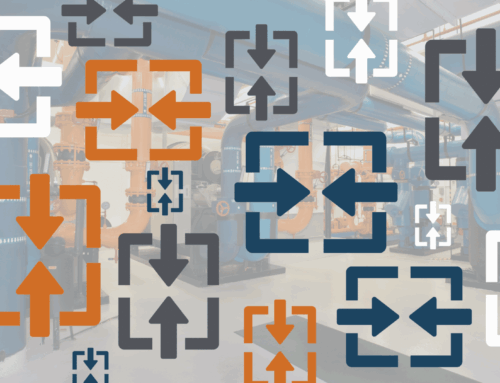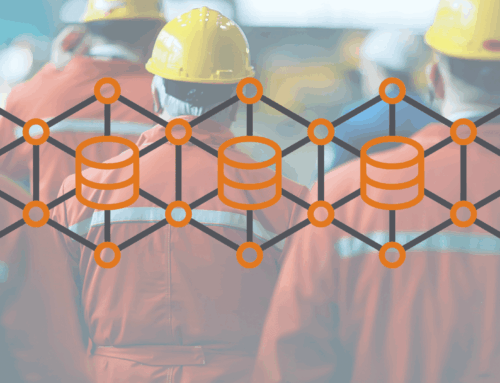Data, data, data. It’s all around us and it seems to be the first answer to what we need—more data! We believe in the power of data-informed decisions to improve operations and reduce costs. Digitalization will change how we do business now and in the future, but it can be overwhelming when thinking about the scale, scope, and reach of data in our business operations. When discussing how data will transform your operations, it is important to understand what data is needed. Not all data is equal. Keep in mind questions like:
- How can we access the data?
- How much data do we need?
- What is the required data quality?
- What context do we need to understand the data?
Data Access
Sometimes we forget that data itself will not resolve an obstacle or problem. It’s an input. There needs to be an action whether it is automated or requires human intervention. Since it’s an input, we first need to access the data. Dark data is data that an organization collects and stores but does not use. Therefore, it currently does not provide value to business operations. In the process industry, we see plenty of plants generating data from its equipment sensors but are not doing anything with it. This data has potential, but in order to leverage that potential the plants need a proper structure to transform the data into actionable intelligence. Their data has a lot of potential, but potential means nothing until you unlock it. To unlock the potential, look for a solution (data historian software) and system that simplifies accessing your data.
Pro tip: do a survey of the data you create, collect, and access. Involve all layers of the organization to ensure you include siloed data. From there, determine how to centralize the needed data so all layers of the organization can then access it either through a centralized historian or data management system. Before you are able to use advanced visualizations or analytics, you must have a strong foundation in accessing the data.
Data Size
How much data do you need? More is not necessarily better. For example, looking at how your plant operated 15 years ago may be interesting but not required for understanding your current operating status. The amount of data needed is based on the question and problems you are trying to solve. Collecting, storing, and using all data is a quick answer, but it introduces inefficiencies and unnecessary work.
Our example: in our predictive analytics solution, we typically use 1 years’ worth of equipment data as this duration provides a clear view of how the equipment operates in the current environment and process. Additional years of data is not necessary and does not provide additional value. How would data from a piece of equipment that is no longer there improve your understanding of the current status of the new piece of equipment, compared to the actual data of the new equipment?
Data Quality
Many may say this is assumed, but you don’t need more data, you need more quality data. For different industries and different problems, the quality of data necessitated may be different, but if you can’t trust the data, what’s the use? When you search data quality, there are different definitions and characteristics of data quality. Some characteristics include timeliness, completeness, orderliness, uniqueness, accuracy, consistency, validity, readability, and relevance.
Pro tip: for data historian software and data analytics solutions, make sure they have an easy way to filter, access, and manage good and bad quality data. You don’t want to trend bad data and you also want a way to know what data is bad. Is the bad data a sensor issue? Are there communication issues? Is it an isolated tag or part of something larger? A feature that allows you to sort bad data or off scan data can save you time!
Data Context
Data without context is difficult to transform into actionable intelligence. By combining data with visualization tools and algorithms, you can create a great presentation or report filled with data, but does it actually provide useful information that answers questions your organization has?
So what does context look like? Let’s look at an example:
It’s 122. This is a piece of data, but so what? It’s 122°F. We are getting closer: it’s a temperature value. If that’s a person’s temperature, there’s an issue to say the least. In contrast, if it’s an oven, we are still preheating. And if it’s the outside temperature, maybe we shouldn’t go for a run. Boiler 7 is 122°F: Now we’re getting more context. If we’re monitoring the status of the boiler in our historian, we have access to even more context like when the temperature reached 122, what the current operating status is of the boiler and related systems, and what the temperature of boiler has been in the past.
Context lets us understand the broader implications of the data, which in turn improves its meaning. When accessing and using data, confirm you understand the context and have a method for all involved to understand the context.
Pro tip: never use a trend in a report or presentation without clearly identifying the source of the data, the period of the data, the variables, and what is shown. For other people, this will help them interpret the information. For you, it will serve as your memory. Nothing worse than having to recreate something after a week or months with no additional information or context.
Data Management
With the ability to access the right, quality data and have the necessary context, organizations can move towards a more robust data strategy and benefit from data-informed decisions. So why wait to transform your data into actionable intelligence? Check out our data historian software and predictive analytics solutions.
And don’t forget to follow our LinkedIn page.






